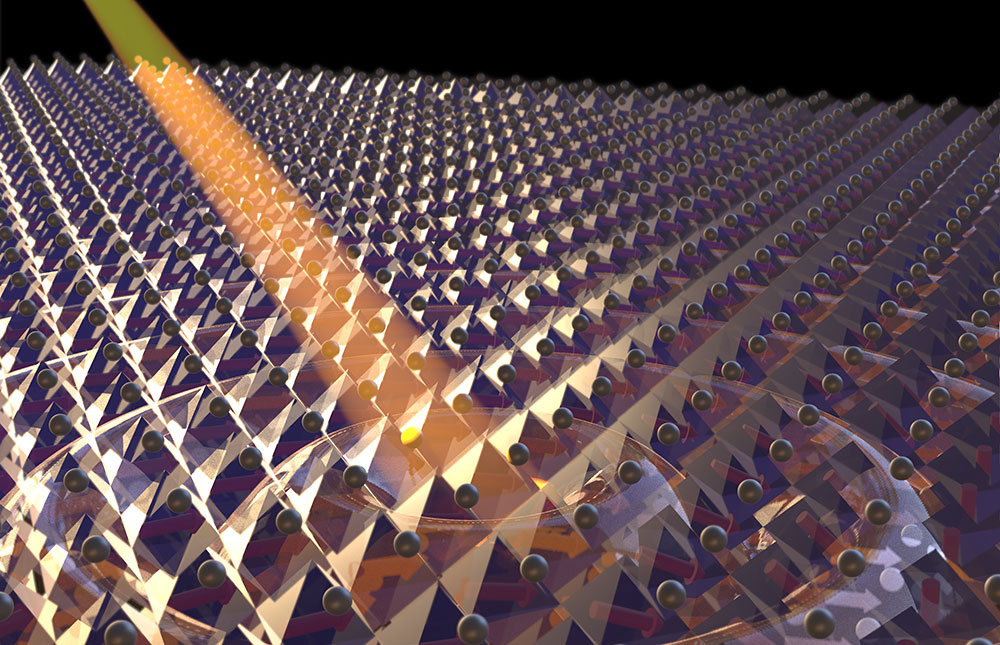
A new component recently installed at the DIII-D National Fusion Facility is enabling it to quickly change the direction of its magnetic fields, an important feature for predicting the design and performance of future fusion power plants.
Called a “Toroidal Field Reversing Switch” (TFRS), this “quick-change” function is unique to DIII-D and illustrates the facility’s value and flexibility for fusion science.
“Being able to reverse magnetic fields between plasma pulses without changing other parameters of an experiment is highly useful for validating the models used to predict the behavior of future devices,” said DIII-D Special Projects Lead Engineer Alex Nagy, who led the project. “But it needs to be done during the experiment, because any delays mean conditions inside the vessel can change.”
DIII-D is the largest magnetic fusion research user facility in the United States and is operated by General Atomics for the U.S. Department of Energy Office of Science. The heart of the facility is a tokamak that uses powerful electromagnets to produce a toroidal (doughnut-shaped) magnetic bottle for confining a fusion plasma. Plasma is the fourth state of matter in which electrons are stripped from the atoms, producing a highly ionized “soup” of nuclei and electrons that can be controlled by magnetic fields.
In DIII-D, plasma temperatures more than 10 times hotter than the Sun are routinely achieved. At such extremely high temperatures, hydrogen isotopes are forced by powerful magnetic forces to fuse together and release energy.
The toroidal magnetic field that confines the plasma is generated when a powerful electric current flows through the 24 large copper coils around the tokamak. When the direction of the current through these coils is reversed, the direction of the magnetic field is also reversed. This reversal can change key processes, such as the directions of drifts that carry particles through the plasma. This flexibility is already providing key insights into the physics of handling and dissipation of high heat fluxes prevalent in fusion devices.
DIII-D is unique among operating tokamaks in its ability to change the toroidal field direction without changing other parameters.
However, until the TFRS was developed, doing so required an hours-long operation in which several large copper plates configuring the direction of the current were removed and repositioned. This typically had to be performed overnight with a crew of several technicians. The process required that experiments with the same magnetic field direction be scheduled in succession, even when they required very different plasma conditions and were performed by different teams. With this new method, researchers can complete comprehensive experiments in a single day, all while improving their ability to maintain stable conditions.
The TFRS automates this reconfiguring. It’s composed of a set of copper plates with motor-driven contact pins that move back and forth to configure the direction of current. The entire operation takes about two minutes. Because experiments on DIII-D are conducted in a series of plasma pulses, or “shots,” that require a ten-minute “cool-down” period afterward, the TFRS allows researchers to switch magnetic field direction back and forth during experiments with no delays.
This new flexibility will maximize the facility’s experimental time and expand the range of science that can be conducted. The TFRS is already helping provide key insights into the physics of handling and dissipation of the high heat fluxes that exist in fusion devices.
The TFRS was designed by Nagy, a DIII-D researcher with the Princeton Plasma Physics Laboratory (PPPL) working together with Taylor Raines, an early-career PPPL engineer. The heart of the switch, the MULTILAM, was supplied by Staubli Electrical Connectors, which developed the TFRS in collaboration with Nagy and Raines. The project is described in detail in a recent article in the journal IEEE Transactions on Plasma Science.
“Upgrades like these keep DIII-D at the forefront of fusion science,” Nagy said. “We’re excited to see the work that can be done with this new capability.”
About General Atomics. Since the dawn of the atomic age, General Atomics innovations have advanced the state of the art across the full spectrum of science and technology – from nuclear energy and defense to medicine and high-performance computing. Behind a talented global team of scientists, engineers, and professionals, GA’s unique experience and capabilities continue to deliver safe, sustainable, economical, and innovative solutions to meet growing global demands.
About the DIII-D National Fusion Facility. DIII-D is the largest magnetic fusion research facility in the U.S. and has been the site of numerous pioneering contributions to the development of fusion energy science. DIII-D continues the drive toward practical fusion energy with critical research conducted in collaboration with more than 600 scientists representing over 100 institutions worldwide. As a U.S. Department of Energy, Office of Science User Facility, participation in DIII-D research is open to all interested parties. For more information, visit www.ga.com/diii-d.
About PPPL. PPPL, on Princeton University’s Forrestal Campus in Plainsboro, N.J., is devoted to creating new knowledge about the physics of plasmas — ultra-hot, charged gases — and to developing practical solutions for the creation of fusion energy. The Laboratory is managed by the University for the U.S. Department of Energy’s Office of Science, which is the single largest supporter of basic research in the physical sciences in the United States and is working to address some of the most pressing challenges of our time. For more information, visit energy.gov/science.



